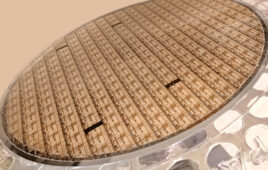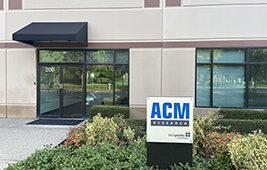Theorists and experimentalists working together at Cornell may have found the answer to a major challenge in condensed matter physics: identifying the smoking gun of why “unconventional” superconductivity occurs, they report in Nature Physics, published online Dec. 22.
Associate professor of physics Eun-Ah Kim led the way, joining forces with experimentalist J.C. Seamus Davis, the J.G. White Distinguished Professor of Physical Sciences in the College of Arts and Sciences. They have isolated a “fingerprint” that identifies specific fluctuations in electrons that force them into pairs, causing their host material, in this case, a high-temperature superconductor called lithium iron arsenic, to make way for free-flowing, resistance-free electron pairs.
Superconductivity overcomes the naturally occurring repulsion between electrons, quantified by Coulomb’s law, which normally prevents their pairing. In “conventional” superconductors – metals that allow electrons to flow without resistance at temperatures around 460 degrees below zero – there’s pretty good understanding of why superconductivity happens. In that case, electron pairing is driven by the exchange of vibrations in the material’s crystal structure, which become strong enough to overcome Coulomb repulsion. This mechanism only works in extremely cold temperatures in which electrons move very slowly.
About three decades ago, physicists started studying “unconventional” superconductors, which superconduct at 100 times higher temperatures. That’s still nowhere near room temperature, but the mechanism of why this happens at such relatively high temperatures is a longstanding mystery, and one with deep implications for quantum physics.
In their Nature Physics report, the generally accepted principle the team has proved is that small jiggles of the electrons’ spin patterns, called spin fluctuations, are what cause the electrons to form pairs. In these unconventional superconductors, the electrons tend to form antiferromagnets, which means that electrons, visualized as little bar magnets, want to align with opposite poles together. This tendency, prior to onset of the antiferromagnetic ordering, causes jiggling of the spins, as the entire system wants to form a fixed pattern.
The fact that these spin fluctuations could provide electron pairing has been conjectured many times over, but proving it has been a big challenge, Kim explains.
“The methods that had worked for simple metals like aluminum don’t quite work for higher temperature superconductors,” she says. This is particularly true for a newer class of iron-based unconventional superconductors, because these materials are so-called multiband systems. That means electrons at a given energy can have several different momentum values with radically different velocities.
Kim’s team tackled this complicating feature and turned it into an opportunity. They figured out how to measure the change in electron energies at particular momentums in the multiband system due to the influence of spin fluctuations, relying on principles such as energy momentum conservation – the same principle that applies to the trajectories of colliding billiard balls.
Through their calculations, they successfully differentiated the fingerprint of spin fluctuations, which is distinct from the fingerprint of lattice vibrations as they would manifest in an energy-momentum measurement. The team employed an energy-momentum measurement technique called quasiparticle interference imaging, pioneered by Davis’ group, to confirm the fingerprint of spin fluctuations in superconducting lithium iron arsenic.
“The approach we have taken here can lead to broader applications and ways of confirming the idea,” Kim says. “The concept of antiferromagnetic fluctuations mediating superconductivity cannot be proved entirely rigorously theoretically; it’s a challenge that requires experiment and theory working together.”
The paper is called “Identifying the ‘Fingerprint’ of Antiferromagnetic Spin Fluctuations in Iron Pnictide Superconductors,” and its first authors are Milan Allen, former postdoctoral associate in Davis’ group and now at the Swiss Federal Institute of Technology in Zurich; Andreas Rost, a former postdoctoral associate in Davis’ group and now at the University of Tokyo; and Kyungmin Lee, a graduate student in Kim’s group.
Kim’s theoretical studies were supported by the Department of Energy (DOE) and the National Science Foundation via the Cornell Center for Materials Research. Experiments were supported by the Center for Emergent Superconductivity, an Emergent Frontier Research Center headquartered at Brookhaven National Laboratory, and funded by the DOE.
Release Date: January 6, 2015
Source: Cornell University




